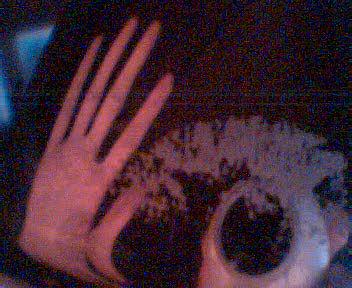Week 3
- Practical 1 - Audio Arts - Recording a Piano with M/S Technique [1]
For this class we recorded the EMU grand using the M/S technique and two U89 mikes.
We begun by testing the hot and soft spots of the figure 8 mic. I had no idea figure 8 mikes even had a hard and soft sides, so I was quite amazed at the difference between them both. An explanation of the MS technique can be found here.[2]
After we recorded a minute of audio, David duplicated the figure 8 track and then inverted it so we ended up with 1 figure 8 track, 1 omni track, and 1 inverted figure 8 track. The two figure 8 tracks were then panned left and right respectively creating a stereo piano.
At the end of the lesson we had a quick look at the session David recorded of a jazz band. This was very educational and I learnt a lot about the technical side of recording in that sort of situation.
I think this lesson feels rushed and that 1 hour hardly does it justice. In my opinion 2 hours would be much better.
- Practical 2 - Creative Computing - Introduction to Supercollider (2) [3]
During this lesson we went over a large amount of Supercollider terminology. We basically covered how the programming language is constructed and inter-communicates with itself.
We talked about Nodes, Synths, Synth Definition, Audio Buses, Control Buses, Shared Control Buses, Buffers, and Unit Generators (the core of Supercollider). At the moment each of these elements feel very detached in my mind, but I’m sure that the more I work with the language it'll all come together.
After doing the week's readings, things became clearer. I find I can vaguely work out what some of the code means, but if I were asked to reproduce it, at this point I wouldn't be able to.
- Music Technology Forum - Presentation - Artist Talk: Gordon Monro [4]
Gordon Monro presented some interesting art pieces that I’ll now describe.
Evochord – An audio/visual art piece that tries to generate a harmonious chord over a period of time.
Red Grains - An audio/visual piece based on the positions of lasers in a space.
What Are You Really Thinking? - A piece that was constructed based on the information given by sensors that were attached to a person who was listened to music.
I thought it was great that although Gordon is a mathematician, he didn’t feel he needed to push the limits of his mathematical knowledge to portray his artistic ideas.
- Music Technology Forum - Workshop - Glen Branca and Robert Ashley [5]
The first piece that we listened to was an excerpt from Glen Branca's 3rd Symphony. This piece contained 11 guitars, a drum kit, and a bass guitar [6]. It started very soft, but slowly built up to a huge climax.
The piece reminded me of the atmosphere in the film Blade Runner. In particular the scene where Harrison Ford is flying across the huge metropolis in a police car at night with a thick fog shrouding the seemingly endless row of buildings.
The second piece we listened to was one of Robert Ashley's sound poetry pieces. Unlike Blanca's piece, this one was more intellectual than visual, and consequently I don’t have a lot to say about it. I noticed however that the content of the prose spoken gradually decreased overtime. David Harris told us it the words were constantly spliced and jumbled up, however I heard what appeared to be a spoken loop that decreased in vocabulary overtime.
- References
- [1] Grice, David. 2006. Practical on Miking a piano with M/S technique. University of Adelaide, 14 March.
- [2] Mellor, David. "The advantages of MS microphone technique". Record-Producer.com. < http://www.record-producer.com/learn.cfm?a=1678 >n.d. Accessed on 09/04/06 [3] Haines, Christian. 2006. Overview of Supercollider. University of Adelaide, 16 March. [4] Monro, Gordon. 2006. Presentation on Gordon Monro's current work. University of Adelaide, 16 March. [5] Harris, David. 2006. Workshop on Glen Branca and Robert Ashley. University of Adelaide, 16 March. [6] No Author. "symphony no. 3 (gloria) - album credits". From Artist Direct.


0 Comments:
Post a Comment
<< Home